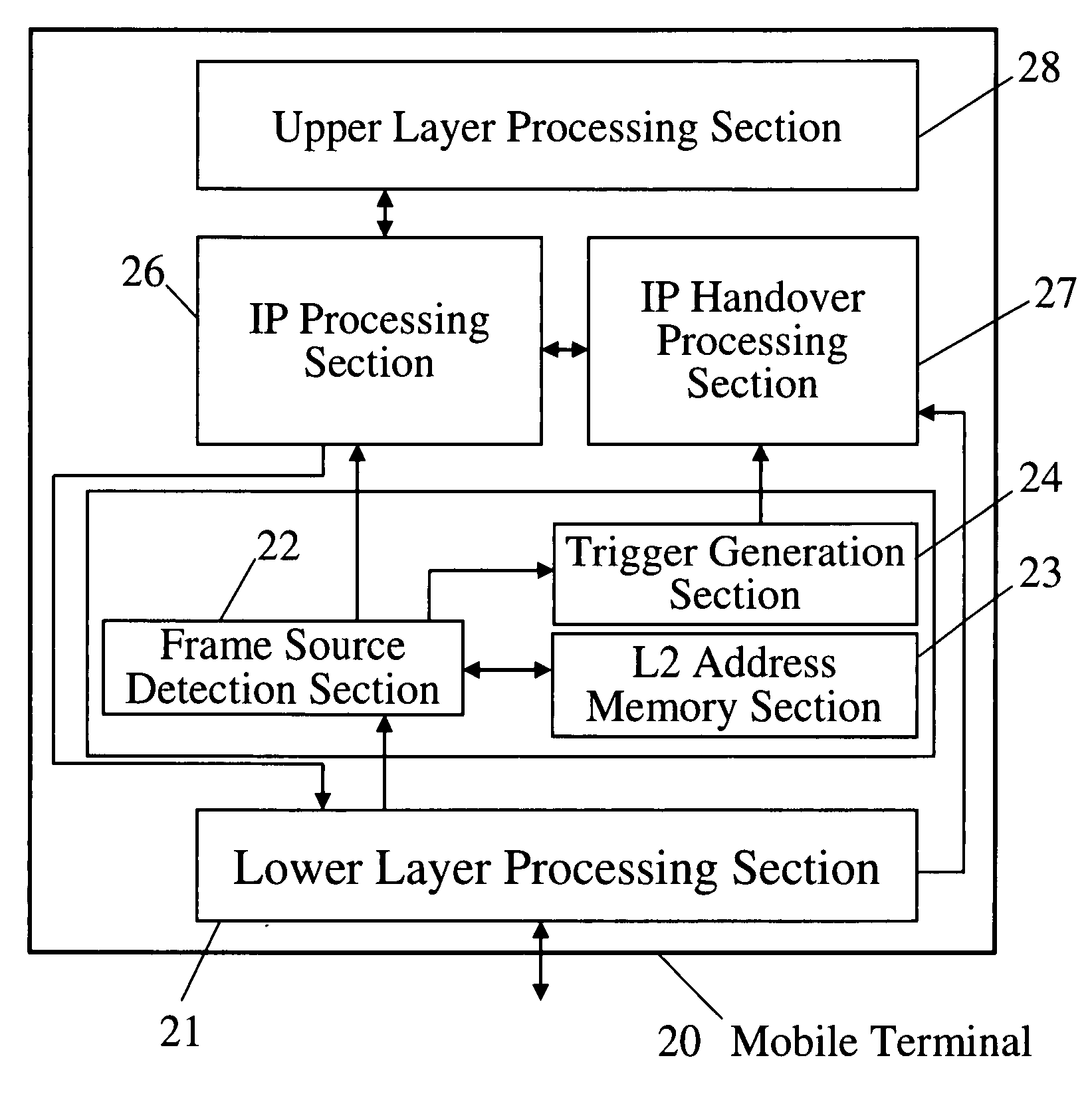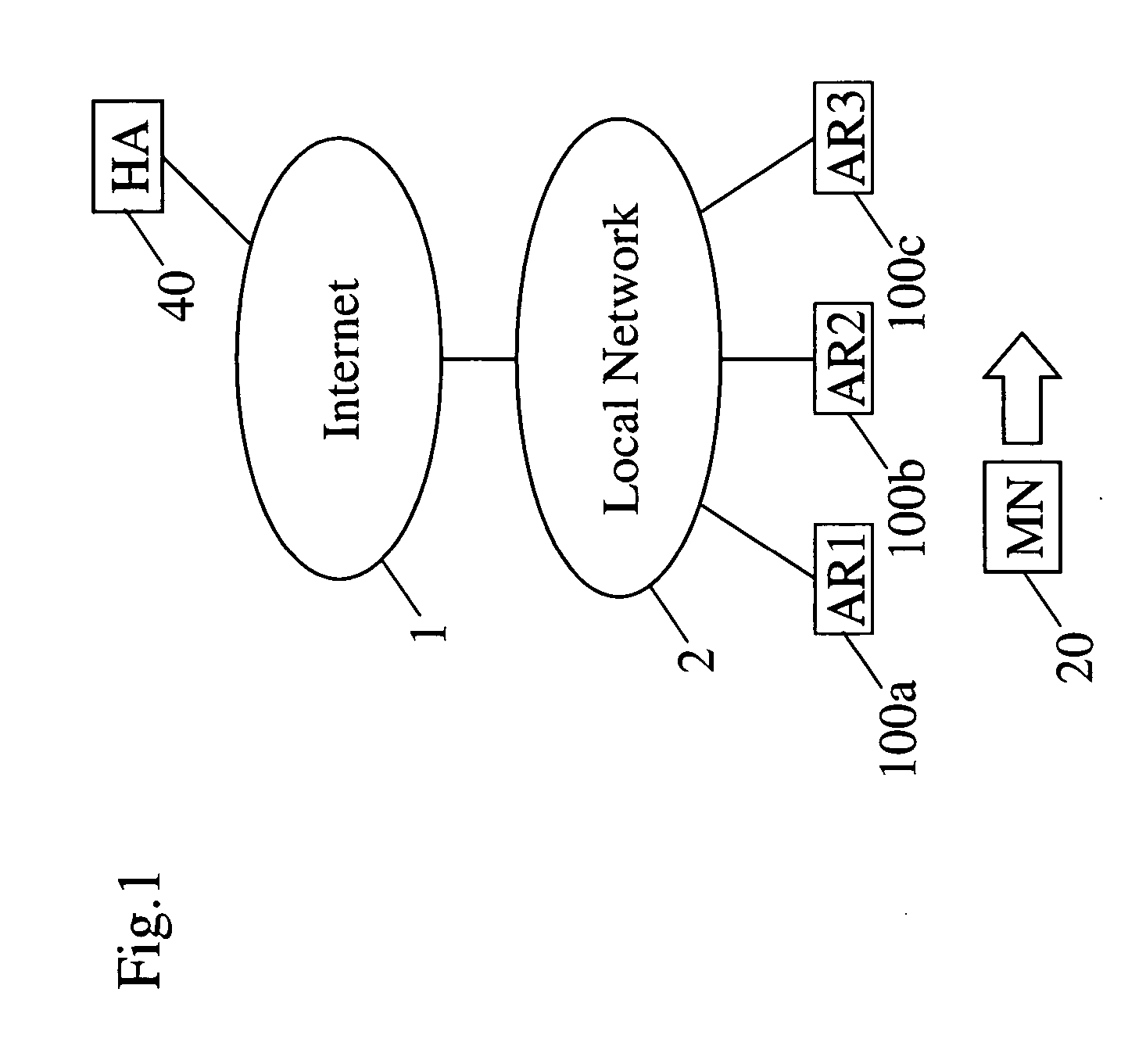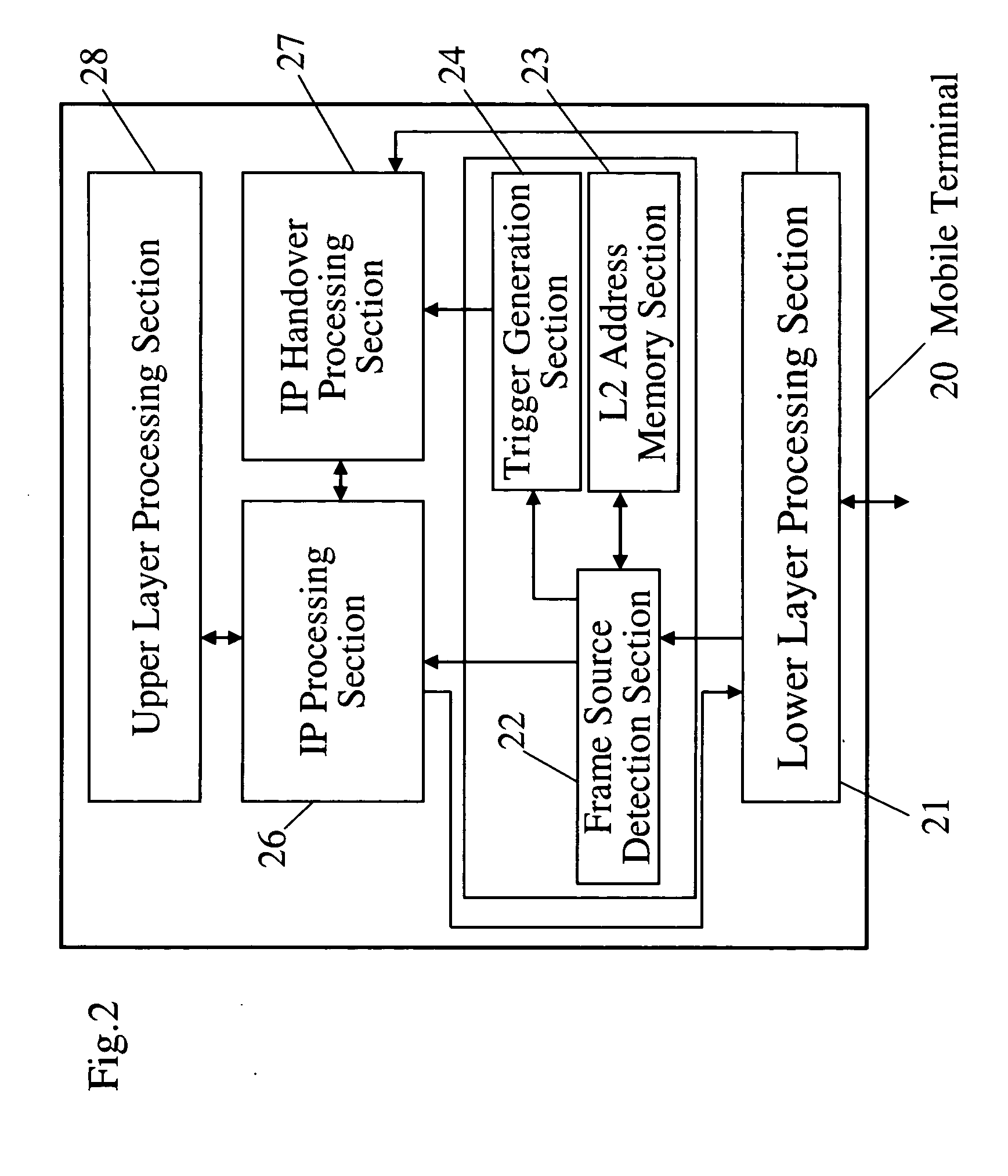Movement detection method and a mobile terminal
a detection method and mobile terminal technology, applied in multiplex communication, data switching networks, wireless commuication services, etc., can solve the problems of difficult to estimate the time necessary, the handover time is made longer, and the possibility of producing a movement detection delay of 500 ms at most and a few hundred ms, so as to reduce the time of handover
- Summary
- Abstract
- Description
- Claims
- Application Information
AI Technical Summary
Benefits of technology
Problems solved by technology
Method used
Image
Examples
1st exemplary embodiment
[0057] The first exemplary embodiment of the present invention is demonstrated hereinafter with reference to FIGS. 1, 2, 4 and 6.
[0058] The first exemplary embodiment of the present invention is, in the case where neighbor access routers provide radio access service at the same frequency, that a mobile terminal 20, when moving, generates a movement detection trigger in reaction to receiving a L2 frame from an access router that is different from the currently connected access router to initiate a part of the IP handover processing.
[0059]FIG. 1 is a block diagram of a mobile communication system according to the present invention.
[0060] In FIG. 1, a local network 2 connects to the internet 2, access router devices 100a to 100c connect to the local network (AR1 to AR3), a mobile terminal (MN) 20 moves while being connected to the access router device 100, and a home agent (HA) 40 houses the mobile terminal 20.
[0061] In the mobile communication system as shown in FIG. 1, the mobile...
PUM
 Login to View More
Login to View More Abstract
Description
Claims
Application Information
 Login to View More
Login to View More - R&D
- Intellectual Property
- Life Sciences
- Materials
- Tech Scout
- Unparalleled Data Quality
- Higher Quality Content
- 60% Fewer Hallucinations
Browse by: Latest US Patents, China's latest patents, Technical Efficacy Thesaurus, Application Domain, Technology Topic, Popular Technical Reports.
© 2025 PatSnap. All rights reserved.Legal|Privacy policy|Modern Slavery Act Transparency Statement|Sitemap|About US| Contact US: help@patsnap.com



